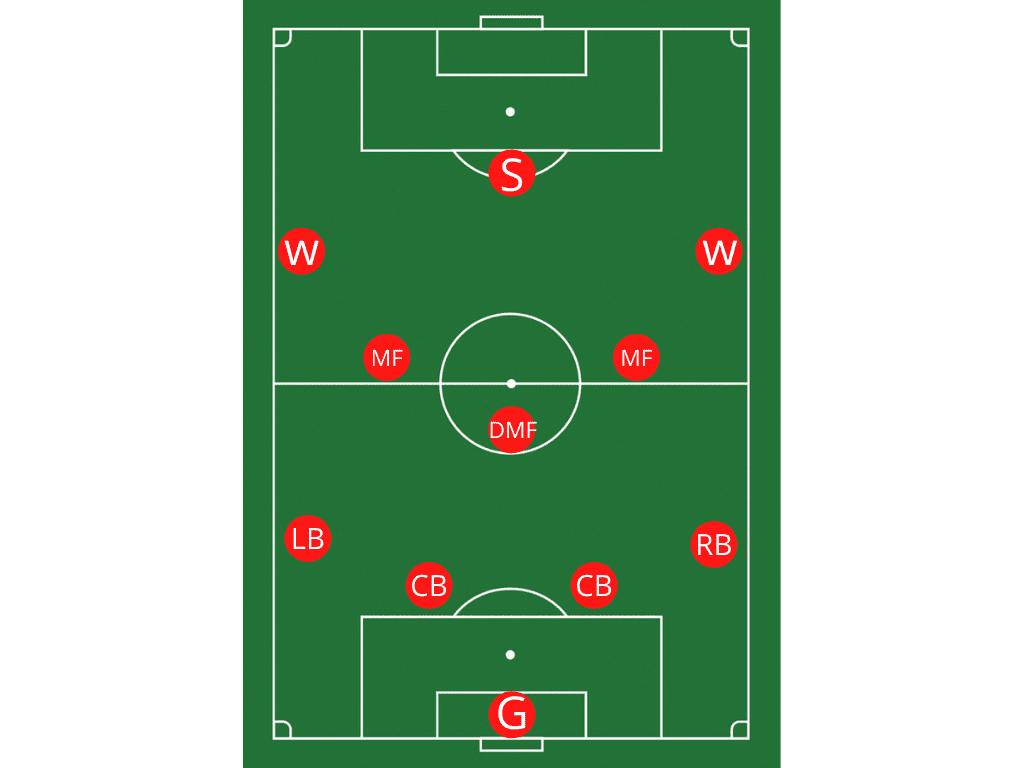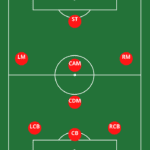Decoding Soccer Position Abbreviations: A Rookie's Handbook
- Last Updated -
Soccer Position Abbreviations
Hey there! You’ve landed on “Decoding Soccer Positions: A Rookie’s Handbook”. This is a detailed guide that’s all about making sense of those tricky little acronyms we see in soccer positions. Maybe you’re just getting your feet wet in the world of soccer, or maybe you’ve just been wondering what all those letters really mean.
Either way, you’re in the right spot. It’s super important for budding soccer players and hardcore fans to get a handle on these abbreviations. Why? Because they give you insight into the strategies, formations, and specific roles players have out there on the pitch. In this guide, we’ll take a journey through the most often-seen abbreviations linked to soccer positions.
This will help you crack the code, giving you a deeper connection and a greater appreciation for the sport we all love – the beautiful game of soccer.
And don’t worry, we’ll be sticking to English for this ride.


The Basics:
Goalkeeper (GK)
Goalkeepers, known as GK, act as the last line of defense for a soccer team. Their primary responsibility is to prevent the opposing team from scoring goals. Goalkeepers showcase excellent reflexes, agility, and decision-making skills. Often hailed as the team’s heroes, they make crucial saves to maintain a favorable score line.
Defenders: Center-Back (CB), Full-Back (FB), Wing-Back (WB)
Defenders play a crucial role in protecting their team’s goal and thwarting the opposition’s attacks. Let’s explore the three main types of defenders: Center-Backs, Full-Backs, and Wing-Backs.
Center-Backs (CB)
Center-Backs, abbreviated as CB, hold a central position in the defense. They are responsible for marking the opposing team’s forwards, intercepting or blocking their attempts to score. To excel in their role, Center-Backs need to possess physical strength, good aerial ability, and excellent tackling skills.
Full-Backs (FB)
Full-Backs, denoted as FB, position themselves on the left and right sides of the defense. They provide support to the Center-Backs and actively contribute to the team’s attacking play. Versatility is key for Full-Backs, as they must excel in both defensive and offensive duties.
Wing-Backs (WB)
Wing-Backs, indicated by the abbreviation WB, share similarities with Full-Backs but play a more attacking role. When their team is in possession, Wing-Backs operate as wide midfielders, and they transition quickly to a defensive role when the opposition gains control. Known for their speed, crossing ability, and stamina, Wing-Backs significantly contribute to both the defense and the attack.

Midfielders:
Central Midfielder (CM), Defensive Midfielder (CDM), Attacking Midfielder (CAM), Wide Midfielder (WM)
Midfielders act as the engines of a soccer team, connecting the defense and the attack while dictating the flow of the game. Let’s explore the various roles played by midfielders and their specific responsibilities.
Central Midfielder (CM)
Central Midfielders, represented by the abbreviation CM, operate in the heart of the midfield. They are actively involved in both defensive and attacking aspects of the game. Central Midfielders require a wide range of skills, including passing accuracy, vision, and the ability to read the game.
Defensive Midfielder (CDM)
Defensive Midfielders, indicated by the abbreviation CDM, have a primary role in shielding the defense and breaking down the opposition’s attacks. They act as a defensive anchor, intercepting passes, and making crucial tackles to regain possession.
To excel in this position, Defensive Midfielders need strong tackling abilities, positional awareness, and effective ball distribution skills.
Attacking Midfielder (CAM)
Attacking Midfielders, denoted as CAM, are the creative sparks of a team. They are responsible for providing key passes, creating scoring opportunities, and often finding the back of the net themselves. Attacking Midfielders possess exceptional vision, technical skills, and the ability to make decisive plays in the final third of the field.
Wide Midfielder (WM)
Wide Midfielders, represented by the abbreviation WM, operate on the flanks of the midfield. They are responsible for providing width to the team’s attacking play and delivering accurate crosses into the box. Wide Midfielders need to have pace, dribbling ability, and the capacity to beat defenders in one-on-one situations.
Forwards: Striker (ST), Center Forward (CF), Winger (W)
Forwards play a crucial role in a team’s offensive strategy. They are responsible for finding the back of the net and creating scoring opportunities. Striker (ST)
The abbreviation ST stands for Striker. Strikers are the main goal-scoring threats for a team. They position themselves in the central attacking area and aim to convert crosses, through balls, or individual efforts into goals. Strikers need to possess clinical finishing, positioning, and anticipation skills.
Center Forward (CF)
Center Forwards, denoted as CF, share similarities with Strikers but often have a broader role. They not only focus on goal-scoring but also contribute to the team’s buildup play by holding up the ball and involving other players in the attack.
Center Forwards require a combination of goal-scoring prowess, physical strength, and the ability to link up play with teammates.
Winger (W)
Wingers, indicated by the abbreviation W, operate on the flanks of the attack. They are known for their speed, dribbling skills, and ability to take on defenders in one-on-one situations. Wingers aim to deliver crosses into the box or cut inside to create scoring opportunities for themselves or their teammates.
FAQs (Frequently Asked Questions)
What does the abbreviation “GK” stand for in soccer?
The abbreviation “GK” stands for Goalkeeper in soccer. The goalkeeper is responsible for guarding the team’s goal and preventing the opposition from scoring.
What does “CB” mean in soccer positions?
“CB” stands for Center-Back in soccer positions. Center-Backs play a defensive role, marking the opposing team’s forwards and intercepting their attacks.
What is the role of a “CM” in soccer?
In soccer, “CM” stands for Central Midfielder. Central Midfielders are involved in both defensive and attacking aspects of the game, connecting the defense and the attack.
What does the abbreviation “ST” represent in soccer?
The abbreviation “ST” represents Striker in soccer. Strikers are the main goal-scoring threats for a team, positioned centrally in the attacking area.
What does “CDM” signify in soccer positions?
“CDM” signifies Defensive Midfielder in soccer positions. Defensive Midfielders play a crucial role in shielding the defense and breaking down the opposition’s attacks.
What is the abbreviation “CF” in soccer positions?
The abbreviation “CF” in soccer positions stands for Center Forward. Center Forwards share similarities with Strikers but often have a broader role in the team’s attacking play.
Conclusion:
Understanding soccer position abbreviations is crucial for beginners to fully grasp the dynamics of the game. Whether you’re watching a match or considering joining a team, knowing the abbreviations will help you follow the action and appreciate the roles of different players on the field.
In this beginner’s guide, we’ve covered the most common soccer position abbreviations and their meanings. From the goalkeeper (GK) guarding the goal to the strikers (ST) and center forwards (CF) aiming to score, each position has its unique role and responsibilities.
Defenders such as center-backs (CB), full-backs (FB), and wing-backs (WB) focus on thwarting the opposition’s attacks and ensuring defensive stability.
Midfielders, including central midfielders (CM), defensive midfielders (CDM), attacking midfielders (CAM), and wide midfielders (WM), are the engine of the team, connecting defense and attack while dictating the flow of the game.
Lastly, forwards like strikers (ST), center forwards (CF), and wingers (W) are responsible for creating scoring opportunities and finding the back of the net.
By familiarizing yourself with these abbreviations and their meanings, you’ll have a better understanding of the positions and strategies employed in soccer. It’s worth noting that while these abbreviations are commonly used, different countries and regions may have their own variations and terminology.
So, next time you watch a soccer match or consider playing the game, you’ll be able to recognize and appreciate the various positions on the field. Enjoy the beautiful game and the intricate roles played by each player! (1)



















